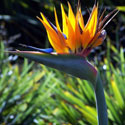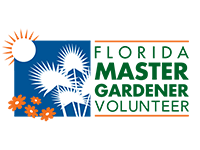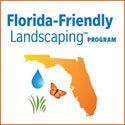The Neighborhood Gardener – April
Happy Gardening!
Turf Alternatives
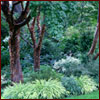 Turfgrass provides benefits such as providing a place to play and reducing storm water pollutants. But a spacious lawn is not always the practical choice. Most homeowners want an appealing landscape, but there are other options besides turfgrass that provide equal beauty. And many of these alternatives don’t require difficult maintenance and unnecessary expenses. More
Turfgrass provides benefits such as providing a place to play and reducing storm water pollutants. But a spacious lawn is not always the practical choice. Most homeowners want an appealing landscape, but there are other options besides turfgrass that provide equal beauty. And many of these alternatives don’t require difficult maintenance and unnecessary expenses. More
Bees and Pesticide
The declining bee population is a growing problem. Honey bees provide a critical service to agriculture, pollinating one-third of our food supply. But across the U.S., beekeepers are reporting losses of up to a million colonies of bees. There are many possible causes being studied, but one factor that gardeners can take action on is the use of pesticides. We list a few precautions that can benefit the health of pollinating bees. More
Plant of the Month: Caladium
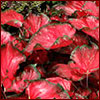 This tropical foliage plant is known for its spectacular, multicolored leaves. Caladiums are easy to grow in Florida’s warm, humid climate. Although there are new cultivars which have been bred to grow in direct sunlight, minimal morning sun is ideal for caladiums and then shade for the remainder of the day. Plant in soil with high moisture and adequate drainage. More
This tropical foliage plant is known for its spectacular, multicolored leaves. Caladiums are easy to grow in Florida’s warm, humid climate. Although there are new cultivars which have been bred to grow in direct sunlight, minimal morning sun is ideal for caladiums and then shade for the remainder of the day. Plant in soil with high moisture and adequate drainage. More
April in Your Garden
April is the best time to plant warm-season annuals like coleus, as well as herbs. Herbs have similar growing conditions to vegetables and require similar amounts of sun and soil moisture. If you didn’t plant your tomatoes in March you should plant them now; start from transplants, not seeds.
For more month-by-month gardening tips, check out the Florida Gardening Calendar. Three different editions of the calendar provide specific tips for each of Florida's gardening regions—North, Central, and South. More
Friend or Foe? Foe: Old World Climbing Fern
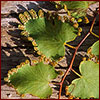 Although attractive and delicate in appearance, Old World climbing fern is one of Florida’s most serious natural threats. It covers over 300,000 acres in central and south Florida alone, smothering entire forests with vines that can grow up to 100 feet long. It can also make wildfires much worse by acting as a conduit for the flames. Small patches can be pulled out by the root, and larger areas can be treated with glyphosate-containing herbicide. More
Although attractive and delicate in appearance, Old World climbing fern is one of Florida’s most serious natural threats. It covers over 300,000 acres in central and south Florida alone, smothering entire forests with vines that can grow up to 100 feet long. It can also make wildfires much worse by acting as a conduit for the flames. Small patches can be pulled out by the root, and larger areas can be treated with glyphosate-containing herbicide. More
Featured Shows on Gardening in a Minute
Success Stories
- We're looking for inspiring, Florida-Friendly success stories from your county. Submit yours today to Wendy Wilber.

